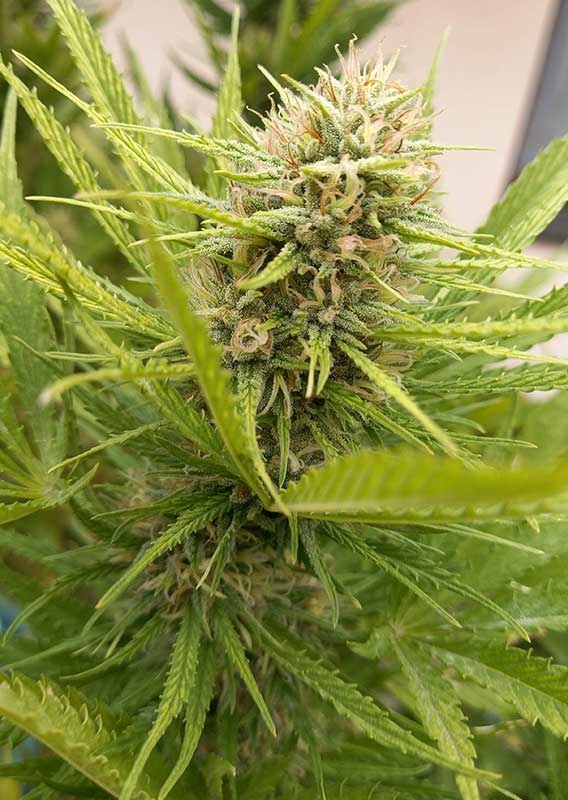
Durban Poison
Durban Poison cannabis seeds
Buy your high-quality Durban Poison cannabis seeds here. This marijuana strain gives off a wonderful smell and tastes equally delicious when smoked or vaped. The plant produces XXL yields that are accessible to beginners thanks to its feminized characteristics and easy growing. Outdoors, this plant can grow up to three meters tall.
The genetics of Durban Poison
.
Durban Poison is a classic Sativa that has been popular with growers at home and abroad for many years. It first reared its head in the 1970s.
As the name Durban Poison suggests, the roots of this cannabis strain lie in the South African city of Durban. There it has also long served as the starting point for many a derivative strain, such as, for example, the famous Girl Scout Cookies weed varieties Sherbet and Gelato.
Feminized cannabis strain
.
Durban Poison is available in both feminized and regular versions. The version you can view (and buy) on this page involves the feminized strain. So this variety is even easier to grow because you don't have to filter out the male plants yourself. This saves you time and energy as a grower.
Yield of Durban Poison cannabis plants
.
Durban Poison plants produce very large yields within eleven to thirteen weeks. It is no exception to see yields between 400 and 600 grams per square meter. The large and heavy main buds are largely to blame for this. However, the plant also develops many richly filled side branches that need to be nurtured. Of course, the best results are achieved with the best materials and advanced growing techniques, especially when growing indoors.
Shape and size of plants
.
Durban Poison cannabis plants are tall and thin but very strong. They can therefore reach a very large size. The plants can even grow more than three meters tall when grown outdoors. When the plant is still young it looks more like a short and stocky Indica variety. Soon, however, it will grow taller and take on typical Sativa characteristics.
Although this weed strain originally comes from South Africa, it has since been bred to be able to withstand the much cooler Northern European climate without any problems. For example, it is known not to be easily affected by mold.
As well as for indoor cultivation, it is also suitable for growing indoors.
This cannabis plant is also very suitable for indoor cultivation. You will have to keep it in check very actively, because a grow room is soon too low for this stretchy plant. Bending, supercropping or a SCROG are good ways to limit the height.
The taste of Durban Poison
Despite its name, Durban Poison doesn't exactly smell like poison. Instead, the plant has a wonderful smell and taste that is acclaimed worldwide. This weed strain has a spicy and sweet smell and taste, reflecting aromas such as anise, licorice, lemon and clove. According to many, it is one of the most pleasant smelling and tasting Sativas, which is why many growers keep coming back to this plant.
High and THC of this cannabis strain
.
The THC content of Durban Poison is high, but certainly not extreme. On average it is around 8 to 10 percent, with the occasional spike to 14 percent. This weed gives you a happy and energetic high that can last a long time. The effect is mostly uplifting and stimulating.
Most people report that Durban Poison allows them to continue to function relatively normally. In fact, they often get extra energy and creativity that makes them perform better in many areas. However, when smoking or vaping larger amounts of Durban Poison, the effect can become more narcotic.
growing options and tips
When growing indoors, it is best to limit the growth phase to just 3 to 4 weeks. When you switch this photoperiod strain to a 12/12 light schedule, the flowering phase will begin.
Durban Poison is easy to grow, even if you have little experience. For example, the plant is easy to trim. Topping or fimming is recommended when growing indoors, because otherwise the plant will mainly stretch and you prefer it to expand sideways.
Durban Poison is easy to grow.
In addition, you can limit the height of the plants by bending the branches. Because these are so sturdy, you don't have to fear they will snap easily.
Supercropping is also a good option, although you shouldn't start this without the necessary experience.
Finally, a Screen of Green (SCROG) is also recommended, because with this too the plant expands mainly in width.







